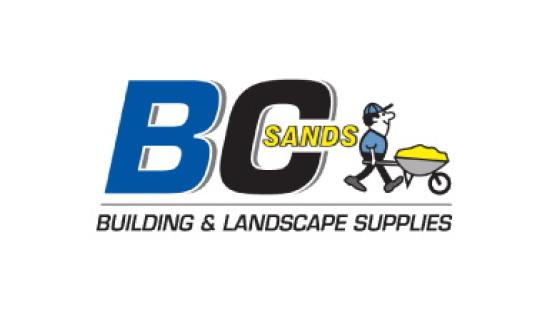What is Route Optimization?
The goal of route optimization is to take customer orders and considering the available resources, road network and operational constraints and determine the combination of routes and stops that best meets the company’s objectives.
Simple optimization, for example, will optimize for the lowest cost to deliver customer orders or ensuring all orders are delivered regardless of cost. Complex optimization uses a more of a balanced approach that can be tailored to the company customer service and financial strategies.
This could include meeting customer delivery requirements while minimizing costs or when delivery resources are scarce, delivering those orders that generate the greatest profit. The number of variables and how they can be represented as part of the optimization process also affects the ability of the route optimizer to provide results that are in line with the company’s objectives.
These variables can include vehicle size, cost and product suitability, driver skills, road network restrictions such as suitable commercial roads, customer time window requirements and delivered goods restrictions such as frozen storage or ensuring that certain commodities cannot travel together.
In this Article...
- toc
What is route optimization software?
Route optimization software takes customer orders and considering the available resources, road network and operational constraints to determine the combination of routes and delivery sequence that best meets the company’s financial and customer service objectives.
Simple optimization, for example, will optimize for the lowest cost to deliver customer orders or ensure all orders are delivered regardless of cost. Complex optimization uses a more of a balanced approach that can be tailored to the company customer service and financial strategies.
This could include meeting customer delivery requirements while minimizing costs or when delivery resources are scarce, delivering those orders that generate the greatest profit. The number of variables and how they can be represented as part of the optimization process also effects the ability of the route optimizer to provide results that are in line with the company’s objectives.
These variables can include for example vehicle size, cost and product suitability, driver skills, road network restrictions such as suitable commercial roads, customer time window requirements and delivered goods restrictions such as frozen storage or ensuring that certain commodities cannot travel together.
What are the benefits of route optimization?
The optimization of routes improves delivery productivity while meeting desired customer service requirements.
This productivity improvement can result in lower delivery costs (e.g. distance, vehicles or drivers) or increased delivery capacity. More sophisticated optimization can maximize profit (revenue associated with the delivery minus delivery costs).
Fleet routing optimization technology has the ability to evaluate more delivery permutations than possible for a human and can result in 5% - 15% more productive route and improved customer service. Optimization technology can reduce the time to create routes and have planners on exceptions reducing the numbers of planners required and focus them on continuous improvement efforts which will deliver more value to the business over time.

What business challenges does route optimization solve?
At a minimum, it helps companies reduce fleet operating costs, improve customer service and improve fleet asset utilization. For companies with short planning horizons such as next and same day delivery, it allows them to quickly create optimal routes and reduce the cut off time for order taking.
Optimization can also be used in a more strategic fashion to determine the impact of customer service policy changes, how to serve new customers or markets and changes in vehicle types and driver shifts, for example.
How much can I potentially save on fuel if I optimize routes?
Fuel savings depend upon a number of factors such as the ability to reduce distance (aka mileage), reduced use of higher fuel consumption vehicles and ability to influence customer delivery times for example. Typically, companies can expect a 5 – 10% % savings on fuel because of reduced distance. However, there can more savings if the routes were manually planned before using optimization technology.
What are variables considered when optimizing routes?
The types and number of variables depends upon the technology used. There are seven major classes of variables: customer, order, vehicle, road, product, facility and business practice or policy.
Customer variables include: priority, receiving hours, and physical delivery requirements.
Order variables include: handling units, overall dimensions and weight and full or partial deliveries.
Vehicle variables include: Size (length & weight) capacity, storage capabilities and loading/unloading requirements.
Road variables include: class, speed limit, direction, permissible turns, parking, and commercial vehicle, hazardous and time of day restrictions.
Product variables include: dimensions, weight, handling requirements and storage conditions and the ability to be shipped with other commodities.
Facility variables include: operating hours, loading restrictions, and ingress and egress restrictions.
Business practice or policy variables include: Deliver heaviest items first, when to mix bulk and discrete items and have XX% of deliveries before 7am.

How can route optimization software benefit my company?
Optimization software improves delivery productivity while meeting desired customer service requirements. This productivity improvement can result in lower delivery costs (e.g. distance, vehicles or drivers) or increased delivery capacity.
More sophisticated delivery optimization can maximize profit (revenue associated with the delivery minus delivery costs). It has the ability to evaluate more delivery permutations than possible for a human and can result in 5% - 15% more productive route and improved customer service.
Optimization technology can reduce the time to create routes and have planners on exceptions reducing the numbers of planners required and focus them on continuous improvement efforts which will deliver more value to the business over time.
What challenges will route optimization software help me solve?
Route optimization software helps companies reduce fleet operating costs, improve customer service and improve fleet asset utilization. For companies with short planning horizons such as next and same day delivery, this software allows them to quickly create optimal routes and reduce the cut off time for order taking.
In addition, it can be used in a more strategic fashion to determine the impact of customer service policy changes, how to serve new customers or markets and changes in vehicle types and driver shifts, for example.
Will route optimization software improve driver productivity?
Optimization software will increase driver productivity by reducing the distance they drive, reducing time and increasing the number of deliveries they can make on a route. It can also optimize vehicle loading, reducing the time spent at the delivery stop further improving driver productivity.
How does route optimization software improve the customer experience?
Optimization software increases on time delivery and offer tighter time windows improving the customer experience. In addition, it can also be used to improve the customer experience by providing customer delivery appointment choices during the buying process.
Fleet Resource Center
Discover Tutorials, Success Stories, Thought Leadership, and More to
Deepen Your Routing, Mobile, and Telematics Expertise.
Recommended For You



